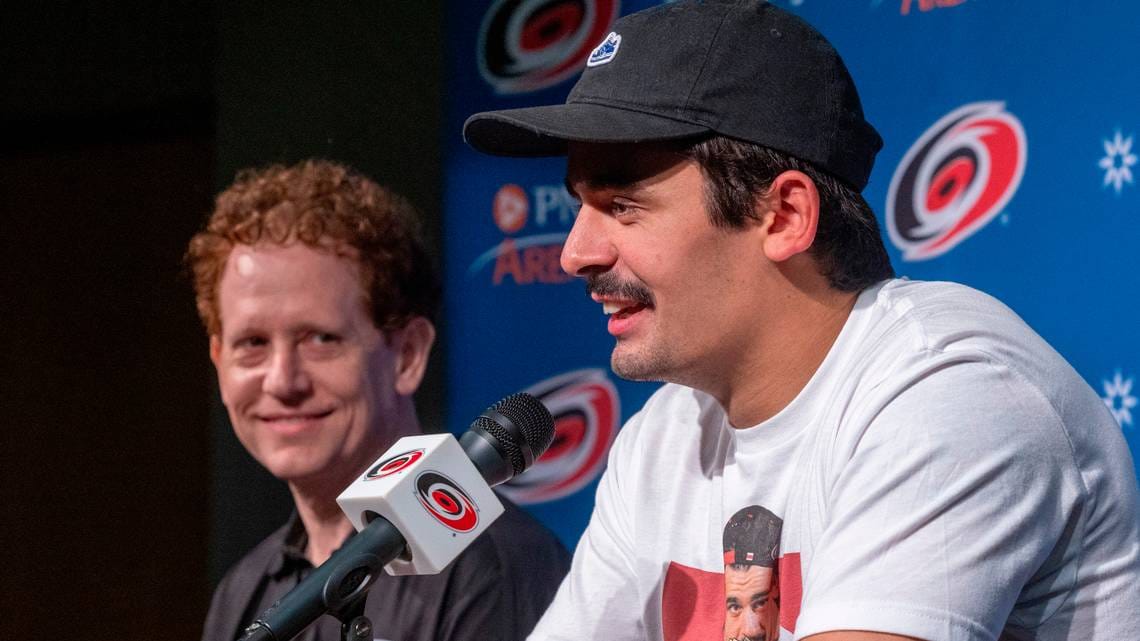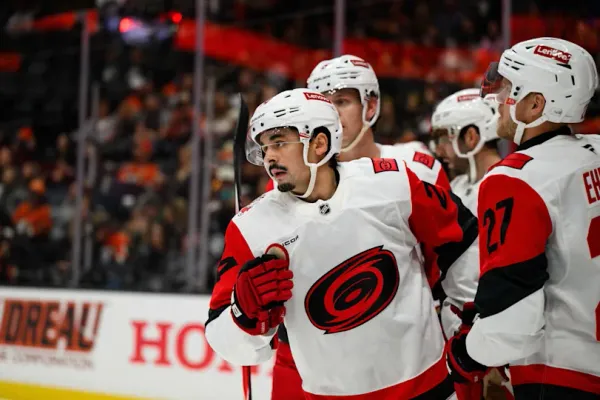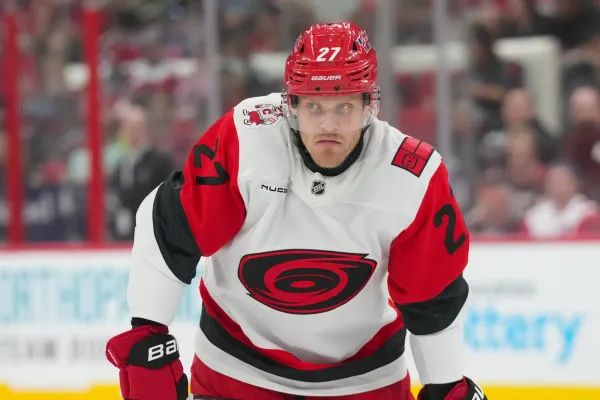OG Fans - September 4, 2024
Seth Jarvis gets the bag.

My fellow Americans, our long national nightmare is over. Seth Jarvis, 30-goal winger and walking meme, is contractually obligated to play for the Carolina Hurricanes for the next eight seasons, signing a contract worth $63.2 million. The $7.9 million AAV (average annual value, aka “cap hit”) falls in line with other players of his value that signed eight-year deals, and for a contract most people saw eclipsing $8 million per, $7.9 million is a decent cap hit that should age particularly well if Jarvis stays healthy and continues playing at the rate he has.
Except it’s not $7.9 million. It’s a little over $7.4 million.
Where did that $500k go?
When an NHL player signs a contract, there are three things that can contribute to its value:
- the base, which is the money the player sees on the 15th and 30th of the month during the season, just like any other employee (with the exception of all of the zeroes at the end of the direct deposit)
- signing bonuses, which are paid out once for the entire year, and
- performance bonuses, which are paid out only if a player hits certain milestones (wins an award, scores X amount of goals, etc.)
Jarvis’ deal has no performance bonuses (those are generally only seen – and allowed - with entry level deals and late 30s veteran “prove it” contracts), but his contract has signing bonuses in years 1, 2, 3, 7, and 8. However, what makes his contract so unusual is that Jarvis elected to take $15.67 million of his bonuses in deferred compensation, receiving it on July 1st, 2032 – the day after this contract ends.
So why does this affect the cap number? Bear with me on this, as I’m a pretend hockey lawyer, not a pretend hockey economist, but what it basically comes down to the value of money today versus the value of money in the future. If I give you $500 now and instead of blowing it on a customized Alexander Nikishin jersey you just put it into decent investments, you’ll have more money than $500 down the line. So, in the inverse, if I tell you I’m going to give you $500 eight years from now, it’s worth less than that today because you didn’t have the opportunity to grow the money. Additionally, cost of living, inflation, and all kinds of other factors contribute to the fact that a dollar now is more valuable than it will be in the future, and dollars today aren’t worth as much as they were in the past when we tied onions to our belts, which was the style at the time.
Anyway, where was I? Right, deferred money. Jarvis elected to take $4.95 million in year one, $4.95 million in year two, and $5.77 million in year seven of his contract and have it paid to him instead on July 1st, 2032, the earliest it can be paid and still be considered “deferred” to get the cap relief that the Canes are getting here. Since Jarvis isn’t getting any additional interest for delaying his bonus payments, the league and the players association see those bonus payments as being worth a lesser amount than if they were paid out on those respective league years. The collective bargaining agreement uses a benchmark interest rate plus an additional 1.25% (which comes to about 5.47% for the sake of Jarvis’ contract) to calculate the value of past or future dollars. Since Jarvis’ bonuses won’t have any additional interest added to them (meaning his $4.95 million bonus in year one will be paid eight years from now at, you guessed it, $4.95 million), we work the opposite way, taking interest away from the bonus number for each year the bonus is deferred.
In the case of Jarvis’ first year bonus deferment, you take $4.95 million and take interest away each year he has to wait, and suddenly that $4.95 million has a value of only $3.233 million in today’s dollars. In year 2, his $4.95 million becomes $3.41 million. In year 7, his $5.77 million becomes $5.187 million. While Jarvis still gets that $15.67 million on July 1st, 2032, in the eyes of today’s dollars, it’s only worth $11.83 million, and that $3.83 million difference gets erased off the cap. Spread out over the eight years of the contract, and that’s $478,750 worth of cap savings each season.
Is it an earth-shattering difference? No. But to sign a player the value of Jarvis to a contract that comes in under the anticipated $8 million AAV in the first place, and then to take nearly another $500k yearly off of that, and that’s a tidy bit of business. But hey, don’t take my word for it.
So, is this going to change the landscape of contracts in the NHL? Probably not. Most players are looking to get as much money up front as possible because, again, money now is more valuable than money later. Jarvis deferring nearly $16 million, which comes out to about 25% of his contract, still only gives the Hurricanes a little under $500k in extra cap room, which is nice, but isn’t exactly Tampa/Vegas LTIR level cap manipulation, and probably isn’t worth the headache for a team to fight about with its star’s next extension. Still, that little bit of extra wiggle room is nice under the cap, especially since the Canes are going to have to find a replacement for Jesper Fast, who won’t play this season after having neck surgery, and the deferment leaves Jarvis with a little bit of protected income for the future, just in case he develops a $1500 a day Faberge Egg habit or something.




